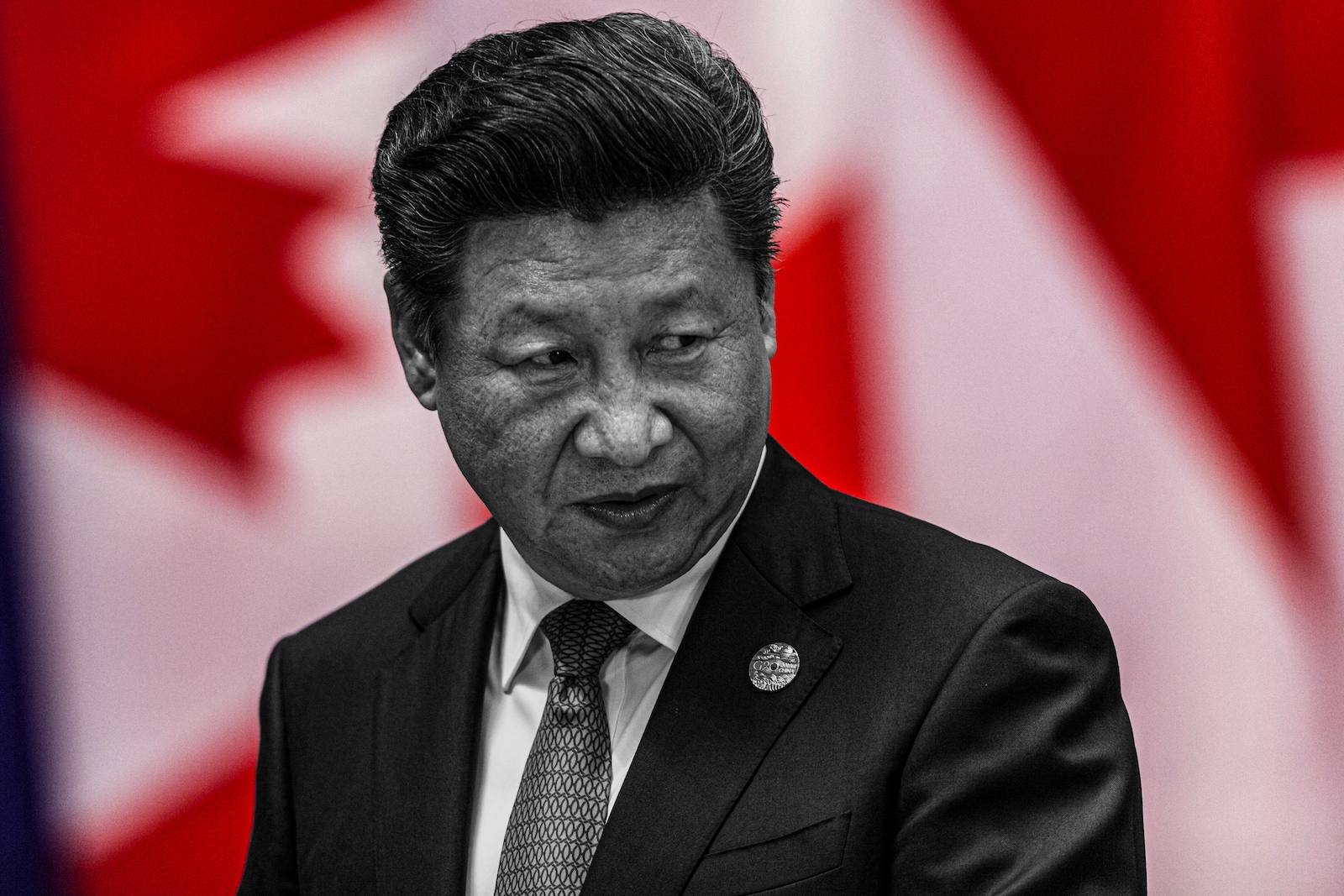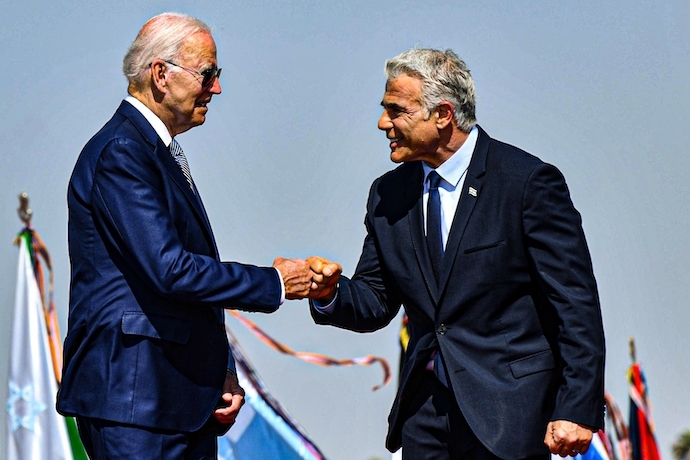
Will the U.S. Abandon the Middle East to Focus on China?
Will the United States reduce its engagement in the Middle East to focus on the Asia-Pacific region in order to contain China? As China emerges as the primary global rival of the U.S., the level of U.S. engagement within the Middle East is unlikely to decrease and might even increase. The U.S. global response to the rise of China could lead to the Middle East emerging as a chessboard for strategic competition between the U.S. and China. The United States is not as directly dependent on Middle East oil as its allies; however, China is. As a result, the region is likely to become the focal point of a China-U.S. rivalry both geopolitically and economically.
U.S. policymakers have good reason for seeking to reduce U.S. involvement in the region. After two prolonged and costly military interventions in Iraq and Afghanistan, U.S. policy toward the Middle East faced a barrage of criticism from both the left and right alike. Experts and politicians pointed to the high cost of maintaining a U.S. presence in the Middle East relative to its benefits.
The main historical benefit and hence the main cause of U.S. presence in the region has always been its large reserves of oil and natural gas. U.S. dependence on Middle East fossil fuels has diminished significantly, as a result of a sharp increase in oil and gas production domestically. Criticism also came from those concerned about the opportunity cost of diplomatic and military resources that the U.S. has invested in the Middle East. The feeling was that some of these resources must be shifted to Asia in response to the rise of China as the United States’ largest global rival.

Beginning with President Obama, successive U.S. administrations have heeded these criticisms in a grand strategy aimed at reducing U.S. military and security engagement in the Middle East. To the extent that disengagement from the Middle East has been motivated by U.S. interest in focusing more on China, it must take China’s engagement with the Middle East into account.
The U.S. cannot ignore the Middle East as long as China is a major player in the region. If China continues to expand its involvement in the region, the U.S. must also maintain its presence. As China’s economic and diplomatic ties with the Middle East have increased in recent years and are expected to expand further, the United States is likely to continue its high-level engagement with the region in the context of a global response to the rise of China.
An early signal of U.S. policy revision was evident in one of President Biden’s comments during his recent visit to Saudi Arabia: “We will not walk away and leave a vacuum to be filled by China, Russia, or Iran. We will seek to build on this moment with active, principled, American leadership.” During the recent G7 conference, the U.S. and its other fellow members also pledged to spend $600 billion in low- and middle-income countries to counter Xi Jinping’s Belt and Road Initiative. This marks the first time Western nations have cohesively and concretely set out a plan to counter China’s massive development-spending diplomacy.
The most valuable export commodity of the region for China is oil — with China’s dependency on Middle East oil imports growing over the past two decades. In 2020, close to 47% of China’s oil imports came from the Middle East, making China the world’s largest net oil importer. In addition to this high level of energy dependency, China has also emerged as the largest exporter to most Middle Eastern countries. For many countries in the region, the share of China in their total imports exceeds the shares of the United States and major European countries. This was not the case in the 1990s.
Bilateral investment between China and the Middle East has also experienced a sharp increase in the past two decades. According to the China Global Investment Tracker data, between 2005 and 2021, China’s investment and construction service projects in the Middle East alone totaled over $200 billion. Even after the pandemic shook up China’s relations with many Western countries, China remained committed to increasing the Belt and Road engagement in the Middle East.
Furthermore, the attraction is mutual. Saudi diplomats recently indicated that the kingdom will continue to strengthen its relations with China. The pandemic also provided China an opportunity to promote its healthcare services and digital technologies in the Middle East. This initiative included the joint development of a COVID-19 vaccine with the UAE.

In 2013, China announced the Belt and Road Initiative to finance and construct basic industrial and trade infrastructure, such as railroads and commercial ports, throughout the developing world. In the context of the Belt and Road Initiative, China has signed long-term economic agreements with many MENA countries such as Saudi Arabia, Iran, Egypt, and Algeria. Allies of the U.S., such as Israel and Saudi Arabia, and its adversaries, including Iran and Syria, have shown a willingness to expand economic relations with China.
Maintaining relationships with Middle Eastern countries and their adversaries could prove unsustainable in the future, however. Despite this, oil-producing countries have welcomed China with open arms. China’s attraction to oil exporting countries is not surprising. While the U.S. and European demand for Middle East oil has declined, China and other Asian countries are perceived as eager and reliable buyers.
China is also challenging the dominance of the U.S. and Europe in sales of advanced technology and weapon systems to the region. This is very worrying to the U.S. with regard to Israel and the Gulf Cooperation Council countries (Saudi Arabia, Qatar, Oman, Bahrain, Kuwait, and the UAE).
Based on the multidimensional engagement of China with Middle Eastern countries, the region will play an important role in China’s global economic strategy. China’s dependence on Middle East oil is expected to continue, along with the Suez Canal emerging as the main sea passage route for China’s trade with Europe and North Africa. Furthermore, Chinese firms have become the dominant foreign investors in an important industrial and re-export zone (the TEDA-Suez Economic Zone) on the Western banks of the Suez Canal. Economic control of the Suez translates into control of global trade.
Consequently, the strategic importance of the region for China will compel the United States to maintain enough military presence in the Persian Gulf and Eastern Mediterranean region. This military presence will enable the United States to disrupt China’s oil imports and global trade in the event of an escalation in U.S.-China tensions. This could potentially turn the Middle East into a battleground for a new Cold War. Rivalry with China will also motivate the United States to maintain its security and diplomatic relations with Middle East oil exporters that supply oil and natural gas to China.
The rise of China as a global rival and technological competitor is already the primary focus of U.S. strategy. China and the U.S., however, do not view this rivalry in the same way. Despite the recent escalation of tensions, China has been reluctant to view global relations as a zero-sum superpower competition. Chinese leaders have repeatedly announced that they are not interested in challenging U.S. military supremacy or the current global order. In the Middle East, in particular, Beijing has announced that its primary objective is strong economic relations without undermining U.S. interests. Many political circles in the U.S., on the other hand, view U.S.-China relations as a zero-sum rivalry in which every gain for China is a loss for the United States.
This negative perception has already led to tensions with China on many issues in recent years, such as the Chinese telecommunication firm, Huawei, with operations based in Europe and the Middle East. If the United States continues or escalates its efforts to undermine Chinese trade and investment relations with third countries, it is only a matter of time before China is forced to abandon its call for Win-Win cooperation with the U.S. In such case, China will be forced to engage in a Cold War with the U.S., despite its wishes to avoid such an escalation. This scenario is not considered the best outcome for the United States. Most Middle East countries do not share the same view of China as the United States and will be reluctant to take sides in a U.S.-China Cold War. The U.S. will either put considerable pressure on most countries or offer them very attractive incentives to turn away from China. These actions are costly and may face political opposition in the face of large budget deficits.
The alternative to this Cold War approach is not to disengage from the Middle East or leave it to China and other U.S. rivals, but to develop a constructive engagement strategy serving U.S. economic and security interests and preserving U.S. leverage on China’s trade partners. This approach would be based on two important principles. First, it is unrealistic for the U.S. to try to evict China from the Middle East or even try to marginalize it. Many Middle East countries value their economic and diplomatic relations with China. Second, the United States has no alternative but to engage in a positive competition with China for economic opportunities and diplomatic influence. In other words, the presence of China will give more bargaining power to Middle Eastern countries in their dealings with the United States and Europe.
Realistically, U.S. domestic politics might direct Middle East policy into a mix of Cold War confrontation and constructive engagement with the region.

